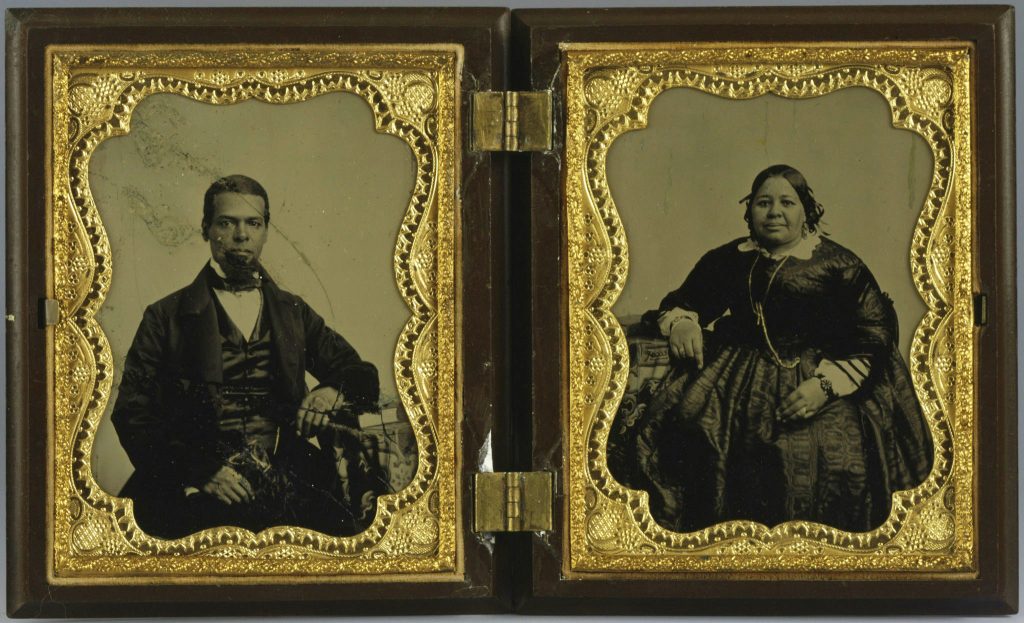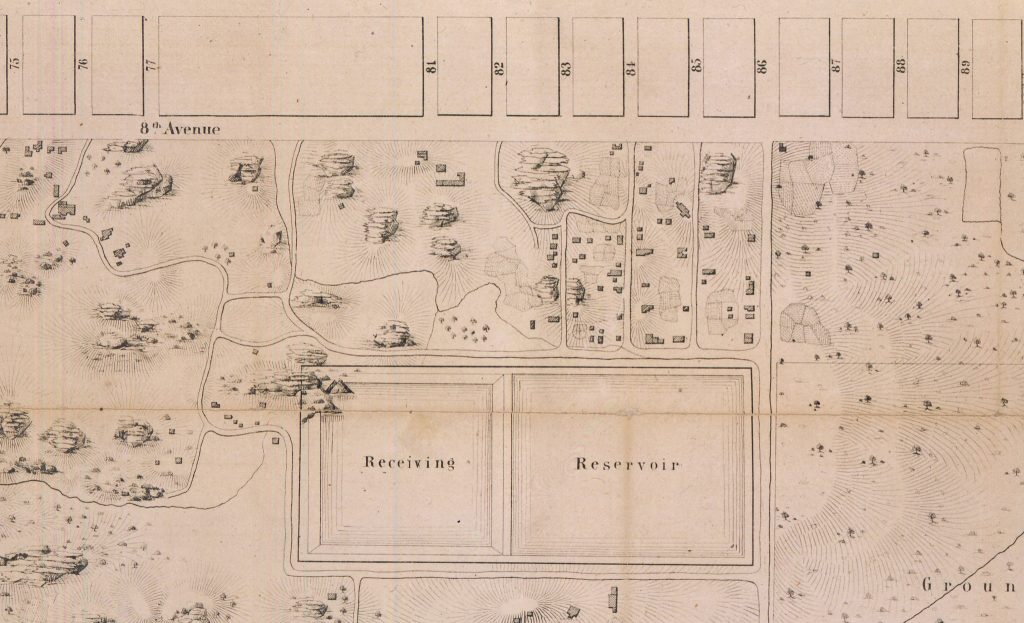TBT: Super Awesome People™ in History.
I’ve lived in New York City for more than 15 years, but it’s only recently that I learned about the history of Seneca Village.
In 1825, John and Elizabeth Whitehead divided up the land they owned on Manhattan’s Upper West Side into 200 lots. Andrew Williams, a Black shoeshiner, bought three of the first available lots for $125. That same year, Black store clerk Epiphany Davis purchased 12 lots, and the African Methodist Episcopal Zion Church (AMEZ—NYC’s first African American church) purchased six lots to use as a Black cemetery. By 1832, the Whiteheads had sold about half of their lots to Black Americans, and Seneca Village was born.

Albro and Mary Joseph Lyons, prominent landowners in Seneca Village (Smith Collection/Gado/Getty Images) 
Topographical Survey for the Improvement of Central Park in 1856 (Seneca Village was on the western perimeter between 83rd and 89th St)
At the time, the land where Seneca Village was established was largely unsettled, and it appealed to free Black Americans who wanted to move away from Lower Manhattan. Slavery was still legal in the South, and New York was one of the last Northern states to fully abolish slavery, with a few enslaved people remaining as of 1830. Lower Manhattan was crowded and unhealthy, and Black Americans faced racism, discrimination, and disenfranchisement. The New York State legislature required that Black men own property valued at $250 or more in order to vote, which effectively blocked all but a few Black men from being able to vote.
For more than 30 years, Seneca Village was a thriving and predominantly Black community with three churches, several cemeteries, and around 225 residents, as of the 1855 U.S. Census. Roughly two-thirds of the residents were Black, one-third Irish immigrants, and a few German immigrants. According to the New York Times, “by 1855, the village contained only 1 percent of the city’s black population—but had 20 percent of its black property owners and 15 percent of its black voters.” What also made Seneca Village unique was the way the community integrated, with Black and Irish parishioners worshipping alongside each other at All Angels’ Church.
In 1853, the New York State Legislature approved the development of Central Park, which would set aside 750 acres of land in Manhattan for a public park large enough to meet the needs of a growing city population. But much of that land was taken over by the government through eminent domain, including the five acres between 82nd and and 89th Streets and 7th and 8th Avenues that made up Seneca Village. Over the next few years, the residents of Seneca Village and around 1,400 others were forced to leave their homes to make way for Central Park (which began construction in 1858), with many compensated for less than their properties were valued.
Like many other early Black communities in America (Rosewood, Florida; Greenwood District, Tulsa), Seneca Village was largely erased from existence. As early as 1871, it seemed like New York City had forgotten Seneca Village, and it was almost lost to history until 1992 when authors Elizabeth Blackmar and Roy Rosenzweig wrote about it in The Park and the People: A History of Central Park. In the 1990s, a group of scholars and archeologists formed the Institute for the Exploration of Seneca Village, and in 2011, the site of the village was excavated, revealing the foundations of many buildings that were razed to make room for the park and thousands of artifacts.
In recent years, the Central Park Conservancy has made efforts to increase awareness of Seneca Village history, most recently through their Discover Seneca Village program, with historical signs that will be on display through 2021. Although guided tours have been suspended due to COVID-19 concerns, park visitors can guide themselves through sixteen historical points of interest using the Seneca Village Downloadable Map.
New York City has also announced the creation of a privately funded monument to be installed in Central Park in honor of the Lyons family. Albro and Mary Joseph Lyons were Seneca Village property owners and abolitionists who ran a boardinghouse for Black sailors which doubled as a stop on the Underground Railroad. The monument will also pay tribute to their daughter Maritcha Lyons who was a teacher, political activist, and a co-founder of the Woman’s Loyal Union of New York and Brooklyn, which advocated for women’s rights and racial justice.
Learn More About Seneca Village
- The Death of the Black Utopia (New York Times)
- Discover Seneca Village: Selected Research Topics and Resources (October 2019)
- Uncovering the Stories of Seneca Village (Central Park Conservancy)
- Seneca Village Downloadable Map (Central Park Conservancy)
- Seneca Village: The Williams Family Legacy (Central Park NYC, YouTube)
- The Lost Neighborhood Under New York’s Central Park (Vox, YouTube)
- Their Land Became Part of Central Park. They’re Coming Back in a Monument. (New York Times)
- Maritcha Lyons (Black Gotham Archive)
- Seneca Village: A Teacher’s Guide to Using Primary Sources in the Classroom (New-York Historical Society)
- Seneca Village Project (Columbia University)
- New Yorkers on the Significance of Seneca Village (Central Park Conservancy)
- The Rediscovery and Research of Seneca Village (Central Park Conservancy)
- The Story of Seneca Village (Central Park Conservancy)